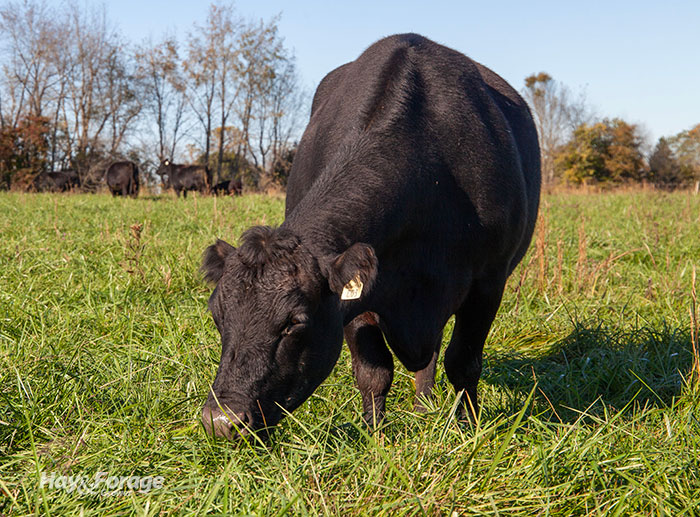
Feed costs make up the largest piece of the expense pie for cow-calf operations. While this slice comprises the total cost of grazing, hay production, and supplemental feed, focusing on the former factor will have the most significant impact on overall farm profitability.
Higher cattle prices are expected to take hold in 2024, which could generate better returns for cow-calf producers compared to last year. Even so, Darrell Peel with Oklahoma State University says feed cost management will dictate how much of this potential revenue will turn into a profit.
Peel, an extension livestock marketing specialist, advises producers to make grazing plans now to minimize forage harvest and supplemental feed costs in the months ahead. Creating a comprehensive forage system and determining how and when to graze pastures will alleviate some of the time, labor, and money spent making hay.
“Considering the distinction between pasture and nonpasture costs is particularly useful because it focuses on the forage — which is the primary production of cow-calf and stocker operations — and the management of that grazing resource compared to the use of harvested forages and supplemental feed,” Peel states.
Stockpile and seed annuals
One objective of a grazing plan may be to widen the grazing window, which Peel suggests can be accomplished by stockpiling forage stands in the summer for fall and winter utilization. Seeding annual forages for cattle to graze in the meantime can ensure forage is available without impeding on the stockpiling process or having to feed hay.
Peel adds that strategic fertilization of introduced species can boost forage quantity and quality throughout the growing season. He also recommends refraining from grazing cattle on native range and deferring these areas for later use.
Feeding hay may not be entirely avoidable, but Peel points out that harvesting forage can cost up to five times more than grazing it. This is especially true when baling low-quality forage and/or storing forage incorrectly. And while making and handling round bales can be more convenient for cow-calf producers, this harvest method may encourage inefficient baling and feedout practices, further compounding feed costs.
“Good pasture management and good hay management are two sides of the same coin,” Peel says. “The labor savings and convenience of round bales has, in many cases, fostered poor pasture management that results in increased hay needs and production of low-quality hay.”
Peel notes hay production per beef cow has more than doubled over the past 40 years in his state of Oklahoma. He attributes some of this trend to the shift from small square bales to round bales, as well as a reduced emphasis on grazing in general.
“Producers feeding small square bales were typically more aware of the quality of hay, how much they were feeding, how much was being wasted, and as a result, often did a better job of managing cow herd nutrition and feed costs,” he asserts. “It takes some additional management to capture the advantages of round bales without wasting hay and incurring additional costs.”
Nonetheless, capitalizing on grazing opportunities can have a greater impact on operational expenses than changing hay production practices. Grazing plans will vary depending on forage species, soil conditions, and weather conditions, but reflecting on past growing seasons and assessing stocking rates will help to establish realistic goals for the year.

